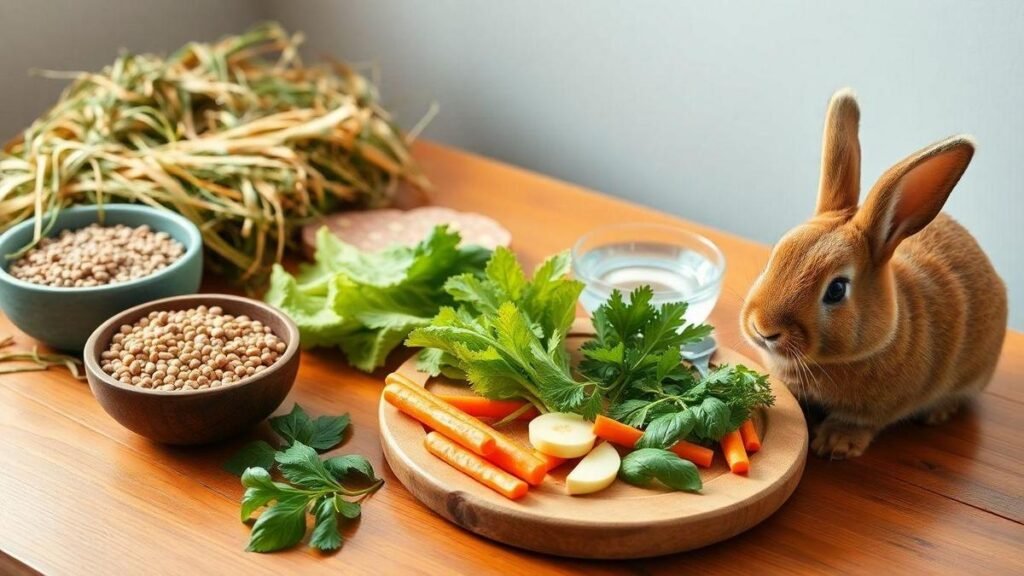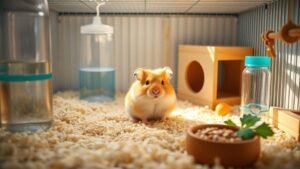Alimentos saudáveis para coelhos domésticos em casa
Alimentos saudáveis para coelhos domésticos em casa is how I care for my rabbit and what this article will teach you. I explain why I choose fresh timothy hay as a high-fiber staple, how I pick, store, and serve it for better digestion. I share why I offer leafy greens daily, the best greens and safe portions, how I wash and rotate them to avoid pests and mold, low-starch vegetables, the tiny amount of safe fruits I give as treats, simple homemade treat ideas, and the foods to avoid. Follow these tips to feel confident caring for your house rabbit.
Key takeaway
- Give your rabbit unlimited fresh hay every day.
- Keep clean water available at all times.
- Feed a mix of safe leafy greens like romaine and cilantro daily.
- Limit pellets and give fruit only as a small treat.
- Avoid chocolate, onions, and iceberg lettuce.
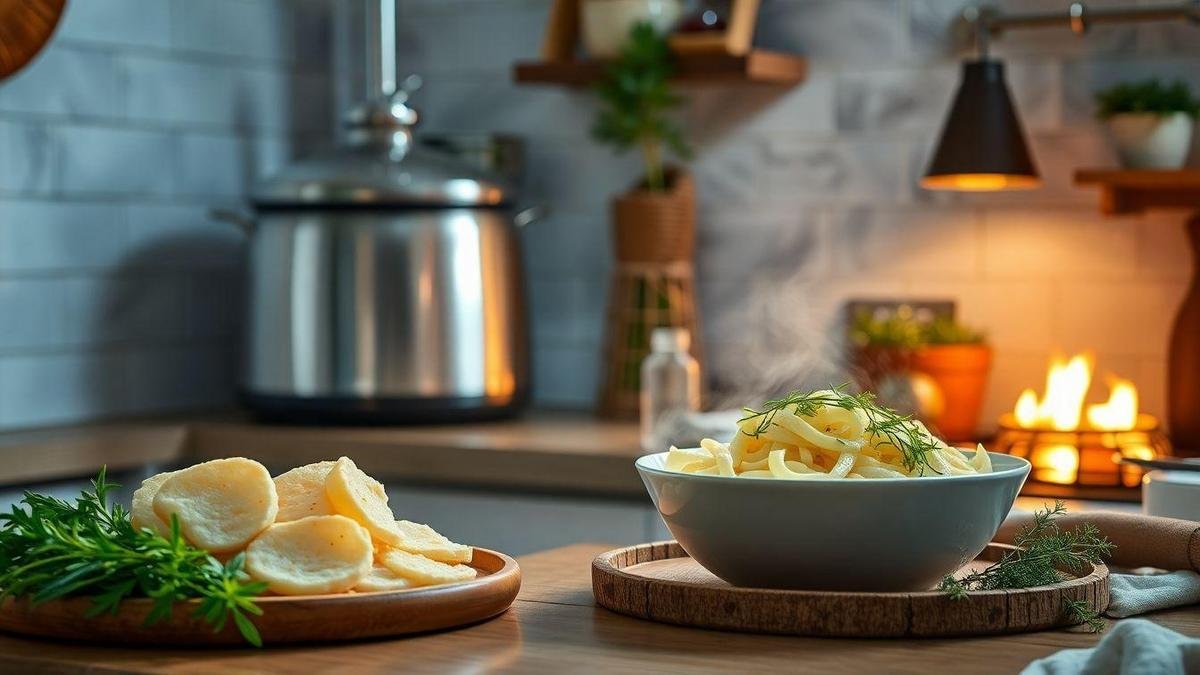
Why I rely on fresh timothy hay (a core of Alimentos saudáveis para coelhos domésticos em casa)
Why fresh timothy hay matters
I feed fresh timothy hay daily because it’s rich in fiber. Fiber keeps digestion moving, helps prevent gut stasis, and wears down the rabbit’s teeth, reducing dental problems. A consistent high-fiber diet also helps maintain a healthy weight and stable energy.
How I pick and store hay
I check hay by smell and feel: good hay smells fresh, looks greenish, and feels leafy. Avoid musty, dusty, or dark-spotted bales. Store hay in a dry, cool spot off the ground and away from direct sun in breathable bins or cloth bags. Rotate stock so the oldest is used first and check weekly. For general cleaning and storage best practices I follow guidance on hygiene tips for easy rabbit care to reduce dust and mold risk.
Signs and actions:
| Sign | What it means | Action |
|---|---|---|
| Fresh smell | Good hay | Use daily |
| Dust or mold | Health risk | Discard immediately |
| Green color, leafy | High nutrition | Prioritize for feeding |
| Brown, brittle | Older hay | Use for bedding or compost |
Tips: buy in small batches, keep feeding hay separate from backup storage.
Hay serving tips to support digestion
- Offer hay free-choice so the rabbit can graze whenever hungry.
- Place hay where your rabbit spends most time to boost intake — consider a tidy feeding spot or hay holder suitable for indoor spaces as shown in our indoor feeding station guide.
- Mix small amounts of fresh leafy greens with hay for moisture and variety.
- Avoid too many pellets; hay should be the main fiber source.
- Watch droppings daily—firm, round pellets mean digestion is working.
- Always offer clean water next to hay and keep the water area hygienic by following tips from keeping pets’ food and water areas clean and safe.

Leafy greens: daily variety for Alimentos saudáveis para coelhos domésticos em casa
I feed fresh greens every day for variety and strong gut health. I keep portions small at first and watch droppings. When in doubt, I consult my vet or standard care references like the general pet care guide.
Portion rule
- About 1 cup of greens per 2 pounds (≈0.9 kg) of body weight per day, mixed with hay and a small amount of pellets.
Best leafy greens and safe portions
| Green | Safe portion/day (approx.) | Notes |
|---|---|---|
| Romaine lettuce | 1–2 cups | Low calcium, good staple |
| Leaf lettuce (red/green) | 1–2 cups | Gentle; avoid iceberg |
| Kale | 1/4 cup | High calcium — feed sparingly |
| Spinach | 1/4 cup | High oxalates — small amounts only |
| Cilantro | 1/2–1 cup | Flavor and variety |
| Parsley | 1/4–1/2 cup | Strong — rotate with other herbs |
| Dandelion greens | 1/2–1 cup | Good fiber, wild-harvest with care |
| Basil / Mint | A few sprigs | Great for treats and scent |
Introduce a new green and watch droppings for 2–3 days. If droppings change or appetite drops, cut back.
Washing and rotating greens
My routine:
- Inspect each leaf for bugs or slime.
- Shake off loose dirt.
- Soak in cool water 1–2 minutes; rinse under running water.
- Dry (salad spinner or clean towel)—wet leaves grow mold.
- Store in the fridge in a breathable container with a paper towel.
- Rotate types every 2–4 days to keep diet balanced.
Keeping the feeding area clean and drying greens thoroughly reduces spoilage—see practical steps in clean and safe food area advice. Trusted leafy choices: Romaine, leaf lettuce, cilantro, dandelion greens, mint/basil in small amounts. Treat kale and spinach as occasional extras.
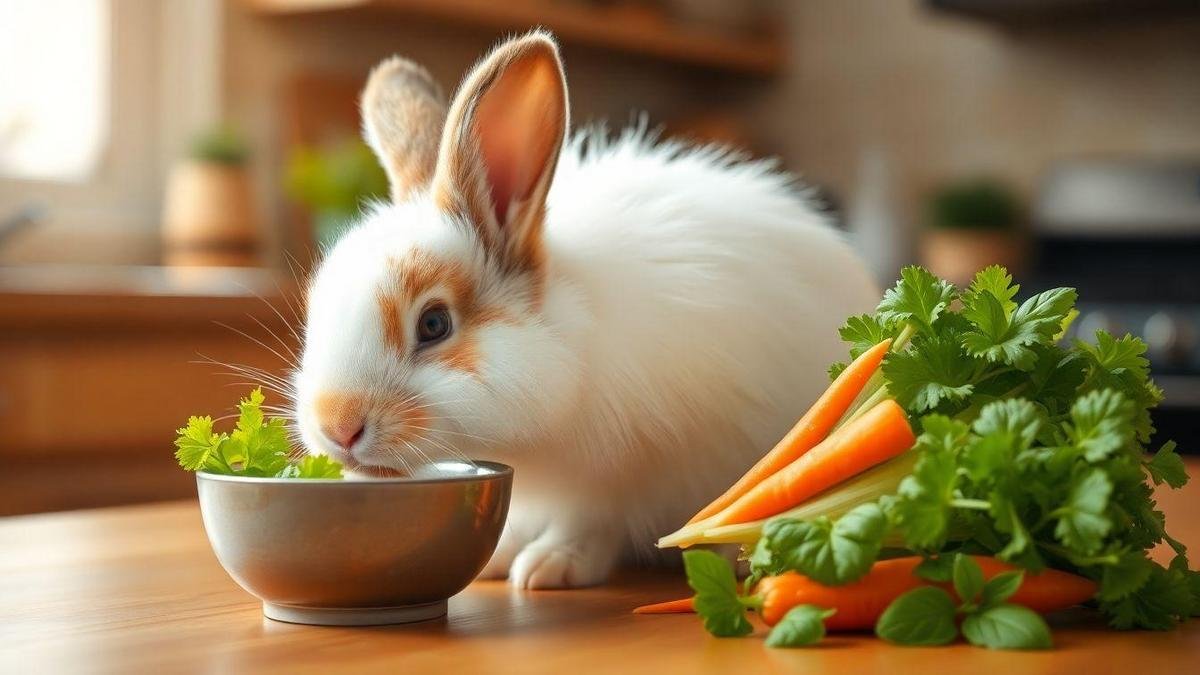
Low-starch vegetables for Alimentos saudáveis para coelhos domésticos em casa
I choose low-starch, high-water vegetables that add vitamins without upsetting the gut. Introduce each new vegetable slowly.
Vegetables I recommend
| Vegetable | Why I like it | Serving tip |
|---|---|---|
| Romaine lettuce | Mild, high water | Mix into greens daily |
| Cucumber | Very low starch, hydrating | Peel if waxed; small slices |
| Zucchini | Soft, easy to digest | Thin slices |
| Bell pepper | Low sugar, crunchy | Remove seeds & pith |
| Herbs (cilantro, parsley, basil) | Flavor and variety | Small handful |
| Dandelion greens | Nutrient-dense | Wash well, offer a few leaves |
| Broccoli leaves | Milder than florets | Small amounts only |
How I introduce new vegetables
- Add one new vegetable at a time.
- Start with 1 tsp–1 tbsp (size-dependent) on day 1.
- Watch droppings for 48–72 hours. If soft or reduced droppings, stop.
- If normal, increase slowly over 5–7 days.
Example: too much kale at once gave soft droppings; stopping it and returning to hay fixed things in two days—so always start tiny. When introducing any dietary change, I follow general care checks and vet consultation suggestions in the pet care guide.
Serving frequency to keep balance
| Type | Frequency | Typical amount |
|---|---|---|
| Leafy greens (mix) | Daily | ~1 cup per 2 lbs body weight total/day |
| Herbs | Daily–few times/week | Small handful or sprigs |
| Cruciferous (broccoli leaves) | 2–3× / week | Small pieces—watch gas |
| Cucurbits (cucumber, zucchini) | Few times/week | A few slices |
| Starchy roots (carrot, parsnip) | Rare treat | Tiny portions |
Always keep hay as the main food; vegetables supplement it.

Fruits and homemade treats (sparingly)
I give fruit only as small treats and keep them rare compared with hay and greens.
Safe fruits and frequency
| Fruit | Serving (per treat) | How often | Notes |
|---|---|---|---|
| Apple (no seeds) | 1–2 thin slices | 2–3× / week | Remove core & seeds |
| Pear (no seeds) | 1–2 thin slices | 2–3× / week | Watch weight |
| Strawberry | 1 small berry | 2–3× / week | Very tasty |
| Blueberry | 1–2 berries | 2–3× / week | Easy to portion |
| Raspberry | 1 raspberry | 2–3× / week | Wash well |
| Melon | 1–2 small cubes | 1–2× / week | Remove rind, high sugar |
| Mango | 1 small cube | 1× / week | Very sweet — limit |
| Banana | 1 thin slice | ≤1× / week | High sugar—special reward |
Avoid raisins, dried fruit, and large amounts of fruit—too concentrated in sugar and harmful for digestion. Wash and cut fruit into small pieces.
Simple recipes for healthy treats
No added sugar, flour, or salt; bite-sized only.
| Treat | Ingredients | Steps | Storage |
|---|---|---|---|
| Frozen Berry Cube | 3–4 berries, 1 sprig mint, water | Blend, pour into tray, freeze | 1–2 weeks in freezer |
| Apple-Oat Nibble | 1 tbsp grated apple, 2 tbsp rolled oats, pinch parsley | Mix, form tiny balls, chill | 3–4 days in fridge |
| Hay & Herb Bite | 2 tbsp crushed timothy hay, 1 tbsp chopped herbs, water | Mix to paste, press into molds, air-dry/chill | 4–5 days in fridge |
Always test one small piece and watch for soft stools.
Treat limits to protect teeth and weight
- Keep treats < 5% of daily calories.
- Avoid sticky/chewy treats that cling to teeth.
- Weigh or check body condition monthly.
- Replace sweets with herbs or small veggie bits if needed.
Example treat sizes by rabbit size:
- Small: 1–2 teaspoons total fruit
- Medium: 1–2 tablespoons total fruit
- Large: up to 2–3 tablespoons total fruit
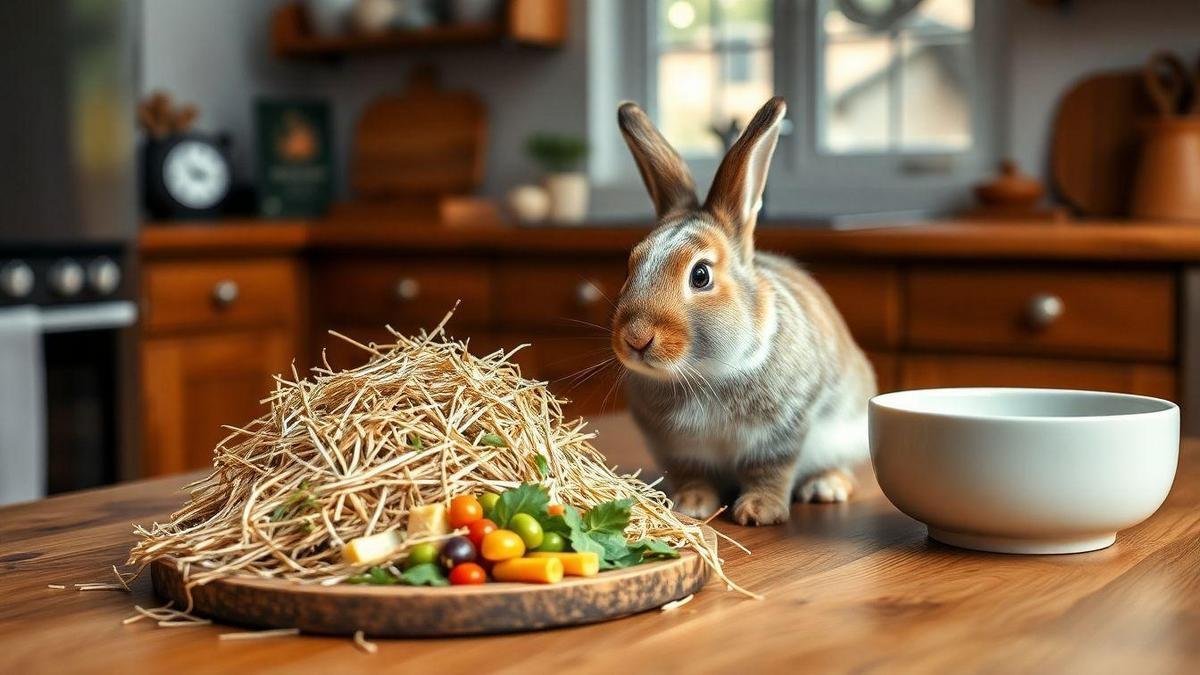
Calcium, fiber balance, and overall nutrition (core to Alimentos saudáveis para coelhos domésticos em casa)
I keep the diet simple: hay, fresh greens, measured pellets, and occasional treats. I use the keyword Alimentos saudáveis para coelhos domésticos em casa as a reminder of healthy home choices.
Pairing calcium-rich foods with a high-fiber diet
| Food type | Examples | Why | Amount |
|---|---|---|---|
| Hay (base) | Timothy, orchard | High fiber; gut & teeth health | Unlimited, fresh daily |
| Calcium-rich greens | Kale, parsley, dandelion | Vitamins & calcium | A few sprigs occasionally |
| Low-calcium greens | Romaine, cilantro | Variety without excess calcium | Small handful daily |
| Pellets | High-fiber pellets | Balanced vitamins | 1–2 tbsp per 2 kg body weight |
| Occasional treats | Carrot, apple | Fun, low calcium impact | 1–2 small pieces, few times/week |
Rotate high-calcium and low-calcium days so calcium doesn’t build up.
Signs of imbalance to watch for
- Soft or runny droppings → low fiber or sudden change.
- Small, misshapen droppings → digestive upset.
- Lethargy or hiding → possible pain, stones, or gut trouble.
- Straining to urinate or blood in urine → possible urinary stones (high calcium).
- Overgrown teeth or less chewing → not enough hay.
If I see these signs, I stop treats and call the vet.
Routine checks and vet advice
- Weigh weekly and record numbers.
- Check droppings daily.
- Offer fresh water daily to help flush excess calcium.
- Ask the vet for urine tests if stones are suspected.
- Share photos and notes with the vet for tailored advice — for general care checklists see the care guide and the self-check suggestions in are you giving your pet the care they deserve?.

Foods to avoid and household hazards
Rabbits have a sensitive gut and some foods act fast. Keep a short list on the fridge.
| Food / Hazard | Why avoid | Signs to watch |
|---|---|---|
| Chocolate | Toxic stimulants | Restlessness, tremors |
| Avocado | Toxic fats | Weakness, breathing trouble |
| Onions / garlic / leeks | Damage red blood cells | Pale gums, lethargy |
| Rhubarb | High oxalates | Drooling, tummy pain |
| Raw potato & leaves | Nightshade toxins | Diarrhea, belly pain |
| Tomato leaves/stems | Solanine | Drooling, weakness |
| Seeds, nuts, pits | Choke/high fat | Choking, diarrhea, obesity |
| Iceberg lettuce | Low nutrition; can cause diarrhea | Loose stools |
| Toxic houseplants (philodendron, dieffenbachia, oleander, ivy) | Many are poisonous | Mouth swelling, drooling |
Keep poisonous plants out of reach and hide cords with tubing. Supervise roaming to avoid chemicals — tips for keeping pets safe during household chores are available in pet-safe cleaning guidance. For choosing safe houseplants and indoor gardens that won’t harm foraging pets, see our notes on safe plants for homes and the DIY indoor garden setup.
Edible herbs & weeds: safe picks and skips
Offer garden greens only if pesticide-free and familiar.
| Safe (I offer) | How I serve | Skip (I avoid) | Reason |
|---|---|---|---|
| Fresh hay (timothy, orchard) | Always available | — | Hay is the diet base |
| Dandelion leaves | Washed, small amounts | Rhubarb leaves | Toxic |
| Plantain (weed) | Washed, mixed | Nightshade plants | Toxic |
| Parsley, basil, cilantro | A few sprigs | Ivy, philodendron | Toxic |
| Mint | Occasional treat | Foxglove | Highly toxic |
| Clover | Sparingly | Azalea | Toxic to heart |
Only pick from known safe areas—avoid sprayed patches and follow safe-plant guidelines from our indoor garden recommendations.
Emergency steps if ingestion of something unsafe
If your rabbit eats something suspect, stay calm and act fast:
- Remove the item and keep the rabbit away from more.
- Note the time and what was eaten; take a photo of the plant/package.
- Call a rabbit-savvy vet or emergency clinic immediately.
- Do not induce vomiting (dangerous for rabbits).
- If breathing or heartbeat slows, head to emergency care now.
- Bring a sample of the plant/food and any stool/vomit sample.
- Keep the rabbit warm and quiet during transport.
Why these matter: quick notes and a sample help the vet identify the toxin and speed treatment. For practical hygiene and first-response tips specific to rabbit care, review rabbit hygiene and care steps and the general care guide.
Conclusion
Keep it simple: unlimited fresh timothy hay and clean water every day — the backbone of Alimentos saudáveis para coelhos domésticos em casa. Pair hay with a steady handful of leafy greens, washed and rotated, introduced slowly (one change at a time). Treats and pellets are extras—keep fruit rare and tiny. Balance calcium and fiber, monitor droppings and weight, and call your vet early if you see warning signs. Consistency, care, and a calm plan protect your rabbit.
If you want more tips, practical recipes, or deep dives, visit our full collection of posts or explore the site home at BlogCraelo.
Frequently asked questions
Q: What are the best everyday foods for my pet rabbit at home?
A: Unlimited hay first, a handful of leafy greens, and a small portion of pellets. For broader care topics see the guide to caring for pets.
Q: Can I feed fruit to my rabbit?
A: Yes, only as a tiny treat and rarely—watch sugar intake.
Q: Which leafy greens are safe to feed daily?
A: Romaine, leaf lettuce, cilantro are good daily choices; kale and spinach should be occasional due to calcium/oxalates.
Q: What foods should I never feed my rabbit?
A: Never feed chocolate, avocado, raw potato, onions, or toxic houseplants. Avoid iceberg lettuce and sugary foods. For household hazards and safe-plant suggestions see safe plants for homes.
Q: How do I follow Alimentos saudáveis para coelhos domésticos em casa at home?
A: Focus on fresh hay, clean water, safe greens, and tiny treats. Keep portions steady, monitor weight and droppings, and consult a vet when unsure. For feeding setup ideas check the indoor feeding station guide.

